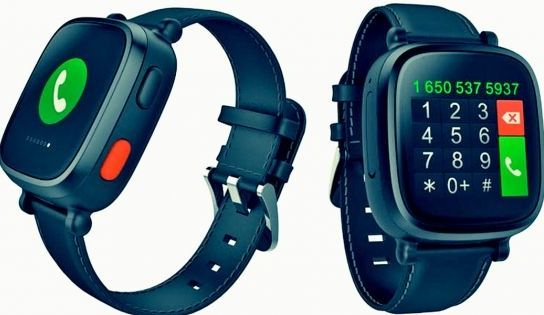Page 11493
May 22, 2016
This Smartwatch for Seniors Has GPS, WiFi, Cellular Connectivity, And an SOS Button
Posted by Shailesh Prasad in categories: internet, mobile phones
The new Wherecom S3, from Omate, has the ability to send the wearer’s GPS location to specific contacts in the event of an emergency.
A new smartwatch is promising something different: Keeping your grandparents safe. The new Wherecom S3, from Omate, was launched on Tuesday. It’s an Android-powered smartwatch with GPS, Wi-Fi, and 3G cellular connectivity, this means that the tech can function without a smartphone.
The watch has the ability to text, call, track paths through GPS, and remind individuals when it’s time to take medication. The S3 also has an emergency alert function in the form of a red SOS button on the side of the watch, which can be pressed in the event of an emergency to send the wearer’s GPS location to specific contacts.
Initial evidence is found that the brain has a ‘tuning knob’ that is actually influencing behavior. Brain circuits can tune into the frequency of other brain parts relevant at the time. The scientific magazine Neuron is publishing the results of researchers at Radboud University the Netherlands on January 22.
Animals (and humans alike) have a metal map of the surrounding environment, consisting of place cells. These cells correspond with places in the physical space and fire when the animal reaches the place or remembers it. The mental map is fed by two sorts of information: with memories from earlier experiences, and with sensory information. But how does the mental map upload this information?
Direct measurements in the brain of mice, looking for their way in a maze, show that memory information is sent with another frequency to the mental map than sensory information is. The brain area representing the mental map synchronizes with these frequencies like a radio receiver: it is only tuning into the information that is important at a given time, an international team of researchers led by Francesco Battaglia from the Donders Institute for Brain, Cognition and Behaviour at Radboud University Nijmegen show. This research sheds light on the intriguing question how brain parts choose relevant information from the constant scattering of neurons going on in the brain.
May 22, 2016
Balloon Sinuplasty for Sinus Infection
Posted by Shailesh Prasad in category: biotech/medical
May 22, 2016
Lasers and nanoparticles combine to allow metallic 3D printing in midair
Posted by Shailesh Prasad in categories: 3D printing, biotech/medical, electronics

A new method of 3D printing could allow for custom printing of metal components for electronics, medical devices, and more.
May 22, 2016
This Earpiece Translates Languages For You In Real Time
Posted by Shailesh Prasad in category: wearables
May 22, 2016
HP’s New Jet Fusion 3D Printers Can Print Electronics Inside a Product
Posted by Shailesh Prasad in categories: 3D printing, electronics

HP has announced that they will be releasing their first generation 3D printers by the end of the year. The Multi Jet Fusion Technology allows 3D printing at half the cost and ten times the speed.
HP has released two new 3D printer models, the Jet Fusion 3200 and Jet Fusion 4200—their first products on the market since the company entered the 3D printing arena in 2014. These high-end printers do not need lasers (like most rivals in their range) and will be available by the end of the year.
Continue reading “HP’s New Jet Fusion 3D Printers Can Print Electronics Inside a Product” »
May 22, 2016
ARM announces new Artemis CPU core, first 10nm test chip, built at TSMC
Posted by Shailesh Prasad in category: computing
May 22, 2016
Ransomware: the digital plague infecting the world
Posted by Magaly Santiago in categories: bitcoin, cybercrime/malcode, economics, encryption
“The individuals who do these types of attacks are well aware of the pressure points and pain points, economic-wise,” says Dr. John Hale, a cybersecurity expert at the University of Tulsa. “They know what they can extract, how much they can extract.
“They prey upon two things: an organization’s reliance on information systems and two, the common situation, where an organization is a little bit behind on backup procedures and policies to prevent these types of things. It really is easy pickings for the bad guys.”
Crypto ransomware is designed to encrypt data stored on the computer, making the data useless unless the user obtains the key to decrypt it. A message details the ransom, which is typically paid in digital currencies such as bitcoin. Locker ransomware locks the computer or device’s interface — save for the ability to interact with the hacker — and demands money to restore it.
Continue reading “Ransomware: the digital plague infecting the world” »















